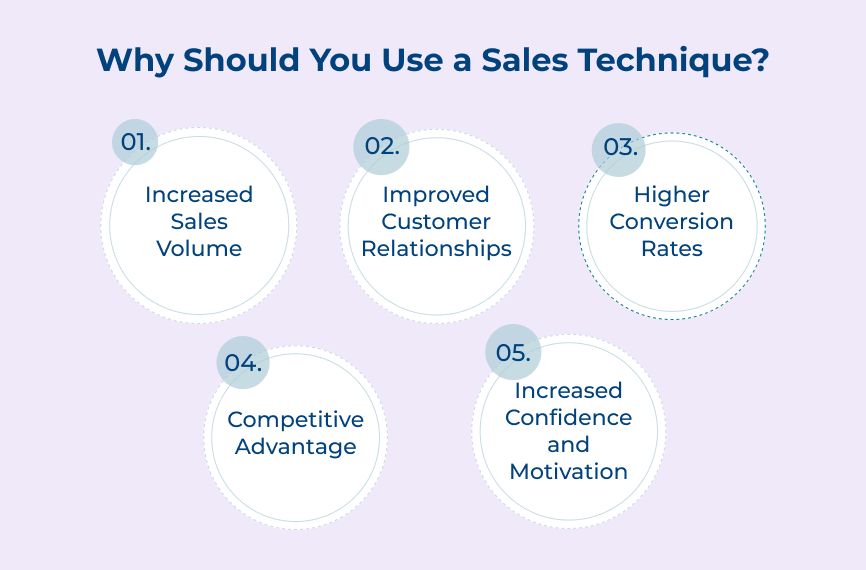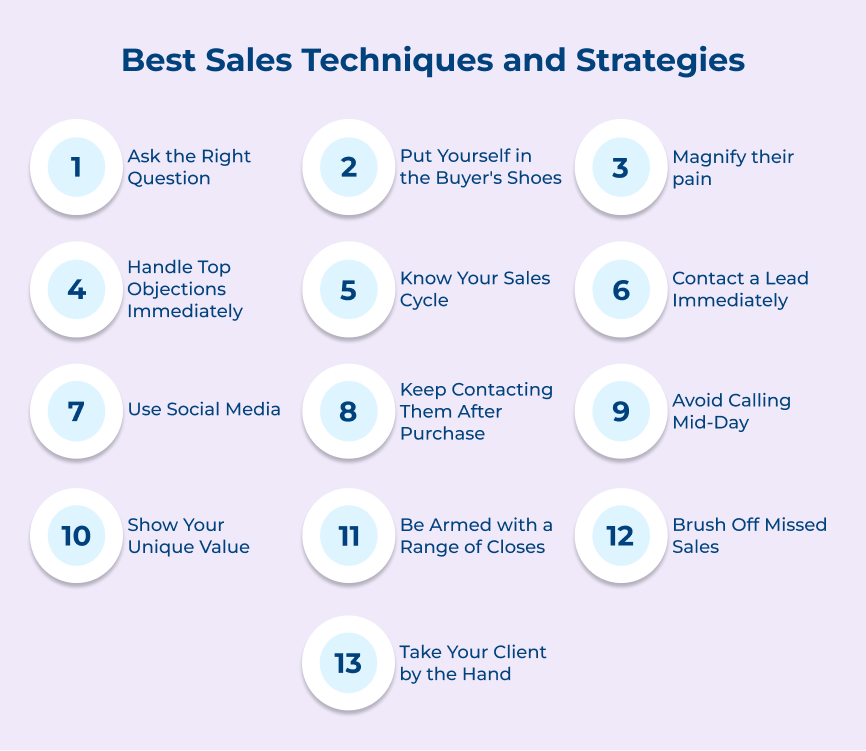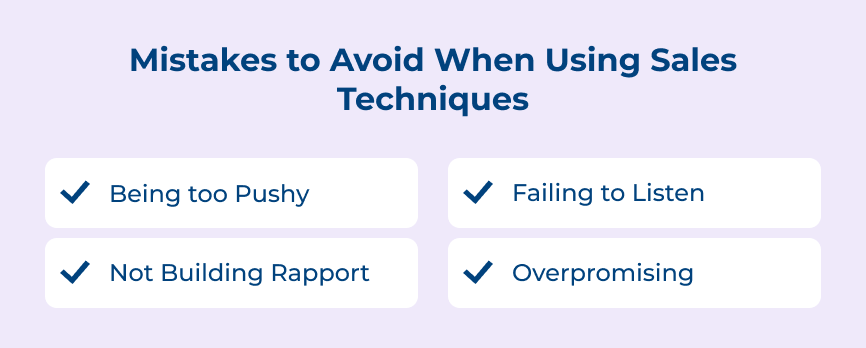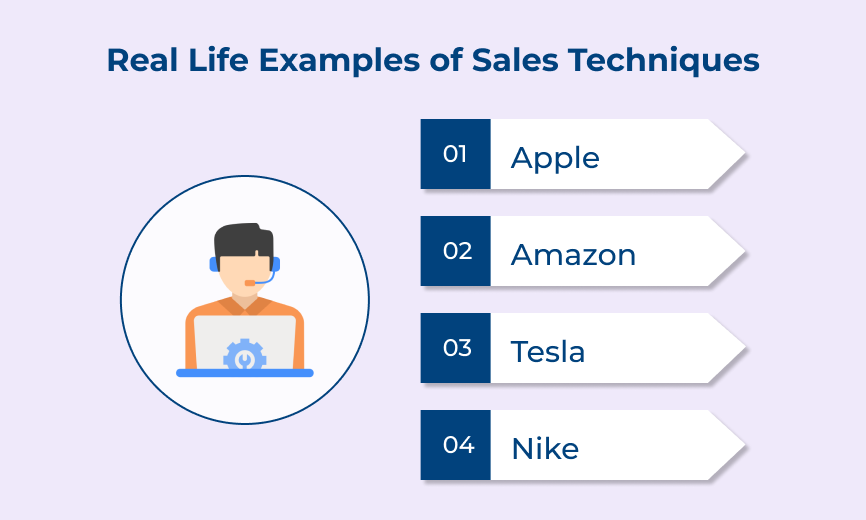1. Ask the Right Question
Asking the right question is one of the best sales techniques and strategies for closing sales. Asking relevant or insightful questions allows businesses to better understand customer’s needs and tailor their sales pitch accordingly. It increases the likelihood of closing the deal and boosting revenue.
The technique helps to close a sale by building rapport with the customer and gaining valuable insights into their pain points or desires. Demonstrating that the business genuinely cares about helping them find the right solution. Asking the right questions allows the brand to uncover hidden objections, address any concerns and guide the customer towards making a decision that benefits both parties.
Pro tips:
- Avoid asking leading questions that may bias the customer’s responses or lead them to a predetermined conclusion.
- Stay curious or keep an open mind, allowing the customer to guide the conversation and reveal key insights.
- Practice empathy or show genuine interest in the customer’s success, building trust and rapport throughout the sales process.
2. Put Yourself in the Buyer’s Shoes
Putting the business in the buyer’s shoes is one of the best sales techniques for closing the sales. Understanding or empathizing with the perspective of potential customers allows a business to tailor its approach and increase the likelihood of making a successful sale. It allows the business to anticipate their needs and concerns, enabling them to address them proactively.
Let’s take an example of a customer who is hesitant to purchase due to budget constraints. The business can offer flexible payment options or discounts to accommodate their financial situation. The technique helps to build rapport and trust with customers. Demonstrating that the business understands their situation and is interested in helping them allows the brand to establish a strong connection.
Pro tips:
- Tailor the pitch and solutions to address the specific pain points or priorities of customers.
- Use storytelling and real-life examples to illustrate the benefits of a product or service from the customer’s perspective.
- Follow up with personalized communication or support to ensure customer satisfaction and encourage repeat business.
3. Magnify their Pain
One of the most effective techniques for closing a sale is to “magnify their pain.” It involves understanding the customer’s pain points and emphasizing how the product or service can alleviate them. Highlighting the customer’s challenges and showing how the solution can solve them allows the brand to create a sense of urgency which drives the sale forward.
Let’s discuss the use case of the technique here. A software company shows a potential client how their outdated system is causing inefficiencies and potentially costing them money. Demonstrating how their software can streamline processes and increase productivity. They magnify the customer’s pain and make a compelling case for their product.
Best practices:
- Tailor the pitch to address their specific pain points.
- Hire sales person who has listening skills and can under customer pain points.
- Provide real-life examples or case studies to illustrate the benefits of the solution.
4. Handle Top Objections Immediately
Handling objections immediately is one of the best sales techniques for closing your sales. When a potential customer objects to the sales process, addressing it promptly can help build trust. It moves the conversation towards a successful close. One use case where handling objections immediately is crucial is when a customer raises concerns about pricing.
There are challenges to this technique. It can be difficult to handle objections effectively without coming across as defensive or dismissive. Some objections may be more complex or require additional information to resolve, which can prolong the sales process.
Best practices:
- Empathize with their concerns and ask clarifying questions to fully understand their objections.
- Practicing objection-handling scenarios with a mentor or colleague can help improve skills in real-time situations.
- Following up with customers after addressing their objections can further demonstrate the commitment to their needs and build stronger relationships.
5. Know your Sales Cycle
Understanding the sales cycle is essential for effectively closing sales and maximizing profits. The sales cycle refers to the stages a customer goes through before making a purchase, from initial awareness to final decision. Knowing the sales cycle allows the brand to tailor its sales techniques and strategies to better meet their customer needs.
One important use case for knowing the sales cycle is the ability to anticipate customer objections and address them proactively. Understanding where in the sales cycle a customer may have doubts or concerns allows the business to prepare responses to overcome these objections. It reassures the customer of the value of the product or service.
Best practices:
- Regularly analyze or update the sales cycle based on customer feedback and market trends.
- Leverage customer data and analytics to better understand buying behavior.
- Tailor the sales pitch to each stage of the sales cycle.
6. Contact a Lead Immediately
Contacting a lead immediately is one of the best sales techniques and strategies for closing sales. When a potential customer shows interest in a product or service, it is crucial to respond promptly. It helps to capitalize on their interest and move them further down the sales funnel.
One use case for contacting a lead immediately is when they have just visited the website and downloaded a whitepaper or signed up for a webinar. Reaching out to them while the brand is still fresh in their mind allows brands to strike while the iron is hot and potentially convert them into a paying customer.
Best practices:
- Make sure to have a system in place for tracking and organizing leads.
- Prioritize leads based on their level of interest and engagement.
- Personalize outreach to each lead and utilize automation tools to streamline the process.
7. Use Social Media
Social media has become one of the best sales techniques for closing sales. The ability to reach a large audience and engage with potential customers in real-time allows social media to be a powerful tool for driving sales.
One key use case showcasing the importance of using social media for sales is the ability to target specific demographics and tailor the messaging. Utilizing social media platforms like Facebook, Instagram and LinkedIn allows businesses to create targeted content. It speaks directly to the needs and interests of their potential customers.
Pro tips:
- Visual content: Use visual content such as videos and photos to capture the attention of the audience.
- Exclusive deals: Offer exclusive deals or promotions to social media followers to incentivize them to make a purchase.
- Metrics: Monitor the performance metrics to track the success of social media efforts and make adjustments as needed.
8. Keep Contacting Them Even After the Purchase
Keeping in touch with customers even after they have made a purchase is one of the best sales techniques for closing sales. Maintaining a relationship with the customers post-sale allows the brand to increase loyalty, encourage repeat purchases and generate referrals.
One important aspect of this technique is building trust and rapport with customers. Staying in touch allows the brand to show that it values its business and cares about its satisfaction. It can lead to positive word-of-mouth advertising and increased brand loyalty.
Best practices:
- Send personalized follow-up emails or messages thanking the customer for their purchase and offering assistance if needed.
- Provide ongoing support and resources to help customers get the most out of their purchases.
- Offer exclusive discounts or promotions to encourage repeat purchases.
- Engage with customers on social media and respond to any feedback or reviews promptly.
9. Avoid Calling Mid-Day, But Go for Mid-Week
When it comes to closing sales, timing is key. One important strategy to keep in mind is to avoid calling mid-day, but instead, go for mid-week. The technique is crucial because calling a prospect in the middle of a busy workday may result in distractions or interruptions. Making it harder to have a meaningful conversation. Calling mid-week allows the brand to catch prospects at a time when they may be more relaxed and open to discussion.
Let’s take an example of a salesman who is trying to sell a product or service to a business. Calling mid-week during the morning or late afternoon may increase the chances of having a successful sales call. It is because the prospect is more likely to be in a better mindset to listen to the pitch and consider the offer.
Best practices:
- Schedule call: Research the prospect’s schedule and determine the best time to call during mid-week.
- Follow up: Follow up with an email or another call if necessary to continue the sales process.
10. Show your Unique Value
Businesses must showcase the unique value their brand can provide to stand out from the competition. The strategy is important because it helps to differentiate the brand, build customer loyalty and increase sales.
Some unique values that a brand can provide include exceptional customer service, innovative product features and personalized shopping experiences. Let’s take an example of a clothing brand. They can offer custom tailoring services to provide a unique and personalized shopping experience for their customers.
Pro tips:
- Understand your target audience: Conduct market research to understand the needs and preferences of the target customers. Tailor the unique value proposition to meet their specific needs.
- Highlight your unique selling points: Communicate the unique value the brand can provide through marketing materials, website and social media channels. Showcase what sets the brand apart from the competition.
- Provide exceptional customer service: Ensure that customers have a positive experience with the brand by offering excellent customer service. Respond promptly to inquiries and resolve any issues promptly.
11. Be Armed with a Range of Closes
When it comes to sales, being armed with a range of closes is crucial for successfully closing deals and increasing sales numbers. A close is the final step in the sales process where the brand asks the customer to make a decision and commit to purchasing a product or service. Various closing techniques allow the brand to adapt to different customer personalities and situations.
One example of a closing technique is the assumptive close, where the brand assumes the customer is ready to make a purchase and confidently asks for the sale.
Best practices:
- Build rapport and establish trust with the customer before attempting to close the sale.
- Be confident and assertive in closing approach, but also respectful of the customer’s decision.
- Practice and refine the closing techniques regularly to become more skilled at closing sales successfully.
Common Mistakes to Avoid When Using Sales Techniques
If you’re looking to enhance your sales performance, it’s essential to recognize and rectify these common errors. Let’s delve into the common mistakes that can sabotage your sales efforts.















